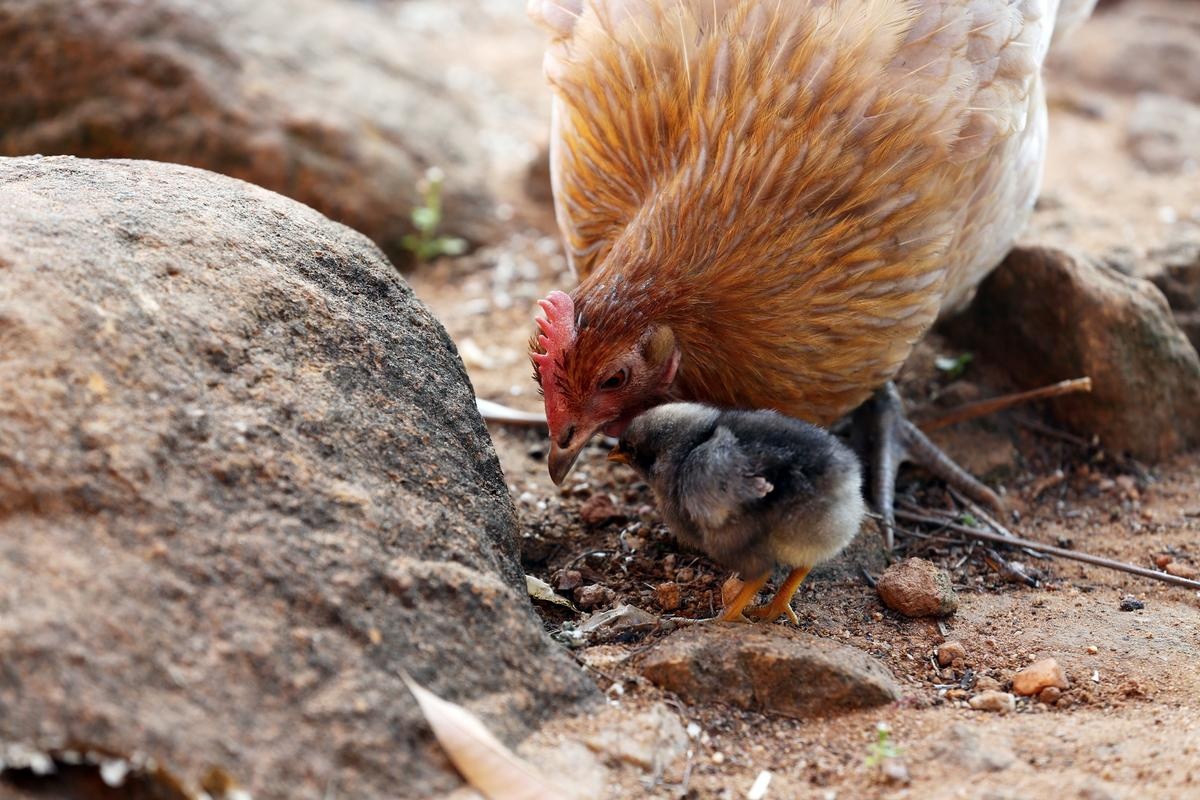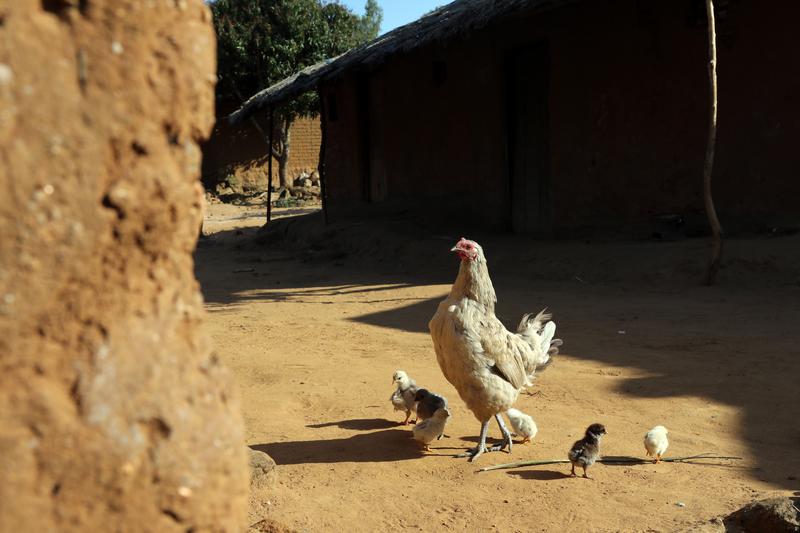Bird Flu, Marburg Virus Among Diseases Global Health Experts Are Watching
Outbreaks have scientists on alert, but risk to the public is low
Posted on Mar 13, 2023

Farmers and families aren’t the only ones keeping an eye on chickens. Global health experts, too, are closely watching the bird.
That’s because of a variant of avian flu, also known as “bird flu” or H5N1, that has spread farther than ever before in recent years. While there is little threat to humans right now, it’s a trend that has global health experts alarmed: if the virus ever mutated to cause human-to-human transmission, it could become the next pandemic.
Avian flu isn’t the only virus raising concerns.
In early February, an outbreak of Marburg virus in Equatorial Guinea prompted a global emergency response. The hemorrhagic fever, which closely resembles Ebola, had never been detected in the country before.
Avian flu and Marburg virus are vastly different diseases. But they have one thing in common: they’re both appearing in locations and populations where they haven’t typically appeared before. And that has global health experts like Dr. Marta Lado, Partners In Health’s cross-site senior health and policy advisor, worried.
“We need to have a clear surveillance system…because viruses can change, can mutate, and if this mutates it can definitely produce big outbreaks,” she says. “These kinds of viruses normally, in humans, produce a lot of mortality. Like people really die.”
PIH has responded to infectious disease outbreaks for more than 30 years, from tuberculosis to Ebola to COVID-19. While avian flu and Marburg virus aren’t currently affecting the 11 countries where we work, PIH experts—along with the global health community—are closely monitoring them as we continue to advocate for pandemic preparedness and stronger health systems worldwide.
Marburg Virus
Historically, outbreaks of Marburg virus have not been large. But the mortality rate is alarming: up to 88%.
First detected in Germany and Serbia in 1967, Marburg has since largely appeared in a handful of African countries, where outbreaks have historically been harder to contain due to a lack of health infrastructure and resources. The current outbreak in Equatorial Guinea began in early February; nine deaths, with one linked to Marburg, have been reported so far.
Much is still unknown about Marburg, but it closely resembles Ebola, spreading through bodily fluids such as blood, vomit, and saliva and living on surfaces for one hour, which puts health workers at highest risk. Symptoms include fever, diarrhea, and vomiting. Ultimately, like Ebola, the virus leads to multi-organ failure.
No vaccines or antiviral treatments have been approved for use, though clinical trials are being designed. The global community mobilized quickly, says Lado, launching rapid emergency response efforts and dispatching health experts and supplies to Equatorial Guinea.
“I think the global community right now is more alert and responds quicker,” she says. “I think COVID has taught us a lot of lessons.”
The global response has been much faster than the early days of Ebola, she adds.
In those days, she recalls, global health experts in high-income countries were saying nothing could be done for Ebola patients and only prevention was possible—despite the fact that when Americans and Europeans became infected with Ebola, they were evacuated to countries with highly-resourced health facilities where their lives were saved, thanks to stronger health systems that lowered the virus’ mortality rate to less than 30%.
The apathy of Western leaders during Ebola was a status quo that PIH refused to accept. Lado and others argued that saving lives was, indeed, possible with the right early detection measures in place and the highest standards of care, including IV fluids, antibiotics, and oxygen.
“I’ve participated in all the outbreaks of Ebola since 2014 until now and these principles are now respected,” she says. “They are the basis of any response to an outbreak of Ebola and Marburg. So I think PIH and other partners made a very strong advocacy at that time.”
Now, Lado is taking her expertise to the World Health Organization, advising on case management for Marburg and drawing from her years of experience responding to Ebola.
What’s especially concerning to her about Marburg is how it has changed over time: the virus is now affecting countries, including Equatorial Guinea, that have never had an outbreak, originating in bats. While not likely to trigger a pandemic, such outbreaks could be devastating for low-income countries with weak health systems—a threat that makes global solidarity, including vaccine equity, crucial in the fight against Marburg.
“The risk of this expanding to other countries is not like COVID or the flu, but the problem is that it happens in places where normally they have weak health care systems,” she says. “It would be complicated in Europe, but in countries where it happens, it’s even worse.”

Bird Flu
Dead minks in Spain. Dead sea lions in Peru. Dead seals in the United States.
All of these animals were killed by avian flu, a virus that has historically affected birds, but in recent years has spread to other mammals. These outbreaks have global health experts worried that the virus could one day mutate to transmit among humans—a change that could trigger a global pandemic.
“If we start seeing clusters of human cases of these avian flus, then that would mean the virus has mutated enough to pass the barrier between animals and humans and that would be definitely worrisome,” says Lado. “That is exactly what happened with COVID.”
Symptoms of avian flu include a fever and coughing, resembling those of other flus. The virus is airborne, enabling it to become a pandemic if it ever transmitted human-to-human.
Humans have caught variants of the flu through contact with infected birds. An 11-year-old girl in Cambodia died of avian flu after coming into contact with poultry. (Her father in the same household was infected, but had no symptoms and survived.)
The mortality rate from avian flu, in humans, is 53%—COVID-19, by contrast, is 1% and the seasonal flu is 0.1%.
Still, says Lado, the general public should not panic. No sustained human-to-human transmission has been reported, and the risk to the public is low. There have been nine cases reported in humans worldwide since early 2022, the start of the current outbreak. But the scientific community is—and should be—worried.
“If this ends up having some mutation and producing more disease in humans, we want to be detecting it as soon as it happens,” she says.
The global health community has already begun pandemic preparedness measures, setting up surveillance groups to identify cases. The U.S., which has a stockpile of avian flu vaccines, is considering mass vaccination of poultry and has reportedly sent viral samples to drug-makers.
A recent report by PIH’s Garrett Wilkinson, government relations and policy officer, and James Krellenstein of the consulting firm Global Health Strategies found that the U.S. could need at least 650 million doses of the H5N1 vaccine for use in humans. It’s unclear how that number could be produced with current manufacturing capacity.
Worldwide, the picture is even more bleak.
As with Marburg virus, Lado is concerned about low-income countries that don’t have strong health systems and infrastructure in place, including the testing and lab capacity to even detect the virus. More outbreaks mean more opportunities for the virus to mutate.
“If some small aspects change, like some mutations happen, this could become the next pandemic,” she says.
Responding to Outbreaks
PIH has responded to infectious disease outbreaks for more than 30 years, from tuberculosis to Ebola to COVID-19.

